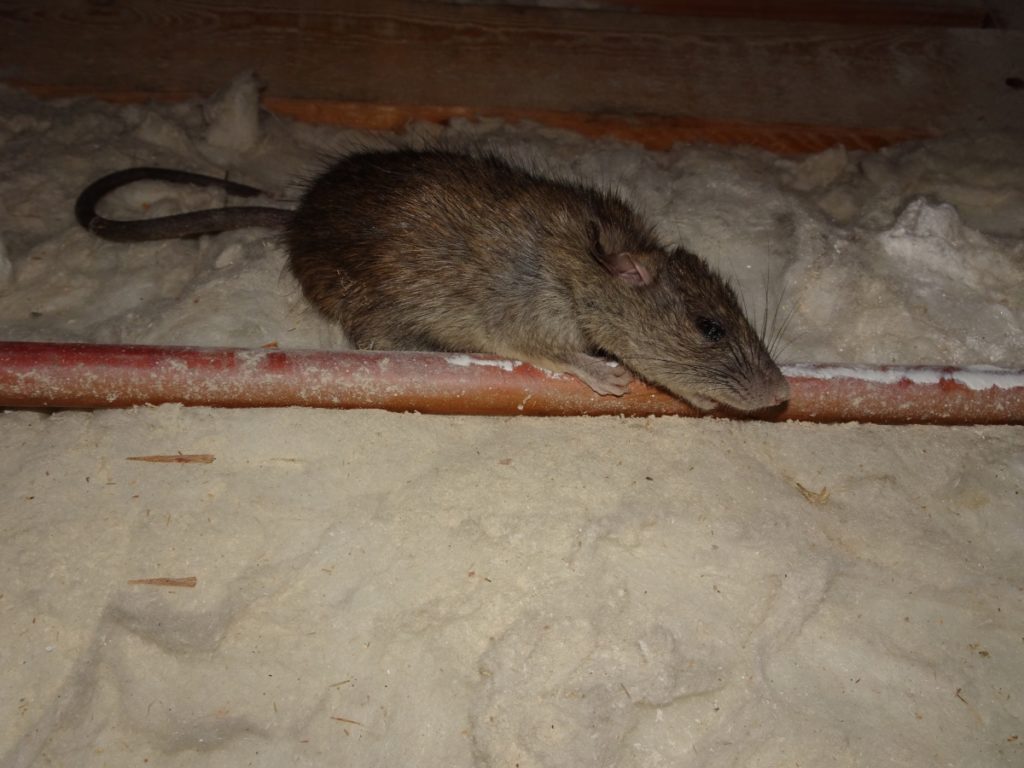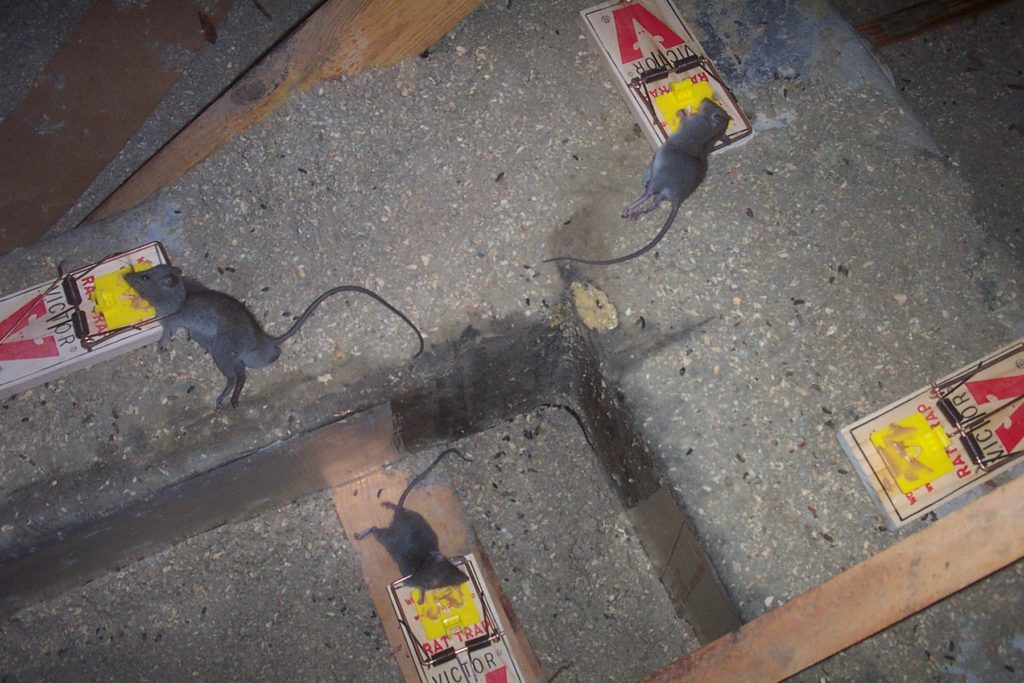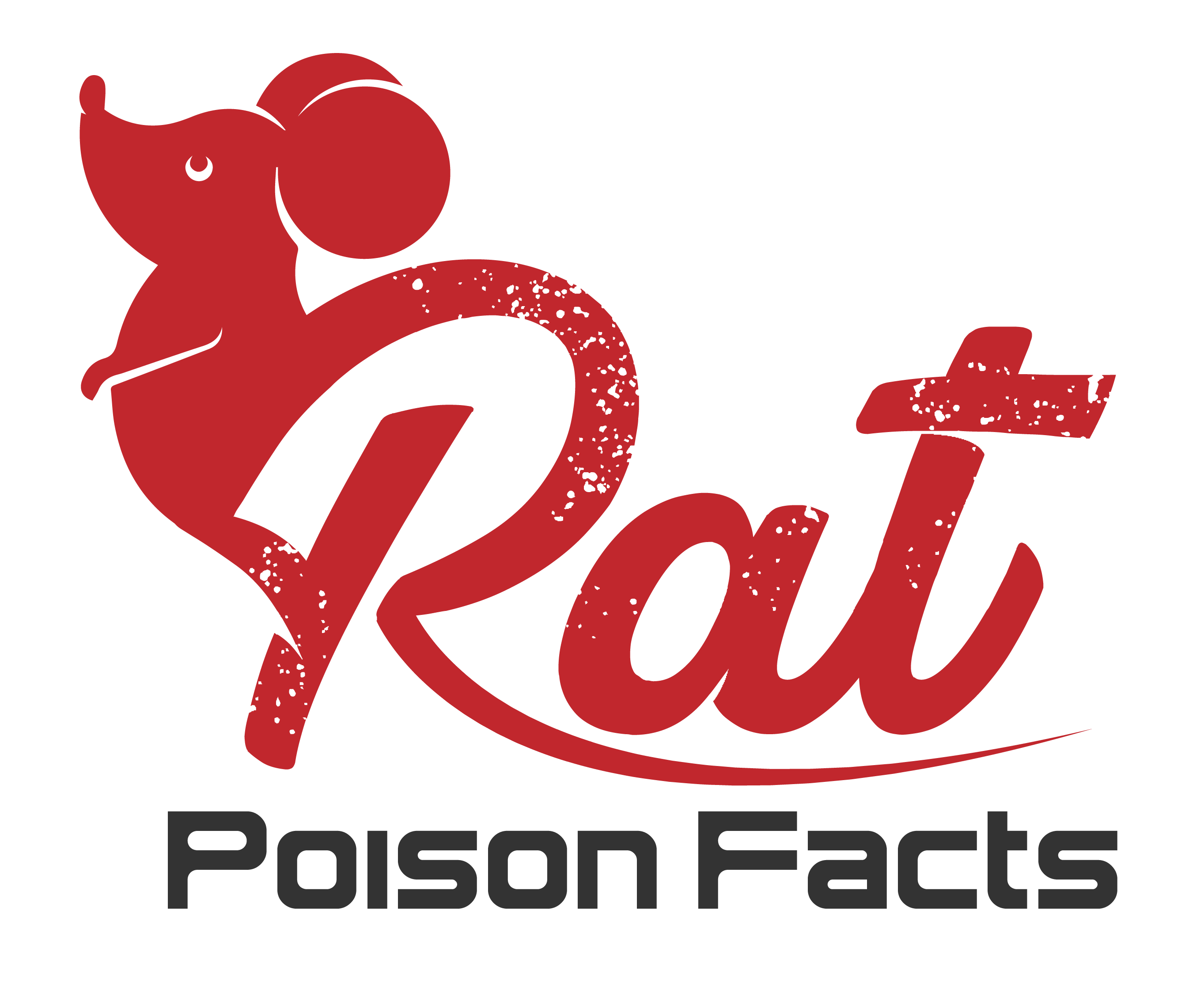
When you are dealing with rats in your home or business, you will likely want to get them out permanently as soon as you can. Rats can spread disease, cause messes, and leave bad odors if you let them stick around.
Choosing your rat eradication method, however, should be done with care. You need to think about where rats go to die in addition to the level of effort and involvement required for your method of choice.
Rats do NOT go Outside to Die
It is very common myth that rats will go outside to die when given the choice. Some of this is likely perpetuated by companies who suggest using poison and some may just be wishful thinking on the part of property owners. After all, if you plan on killing rats, you would rather them end up outside where you do not have to deal with them.
Unfortunately, there is no rodenticide to date that convinces rats to leave your building after they eat it. If someone tells you otherwise, they are lying or misinformed. You should never trust a rat control “expert” who furthers this myth as they likely know better and are just looking to sell you services.
You Cannot Control Where Rats Die
Unless you use a method of killing rats that will do so instantly, there is no way to control where rats will die. If you use a poison or let rats die a natural death, there is absolutely no method of guaranteeing the place of death.
Keep in mind that most poisons take anywhere from half a day to several days to work. During this time, the rat may stick to its normal routine and die along one of its favorite paths. Or it may die in its nest buried away.
Rats Frequently Die in their Nests
Unfortunately for property owners, it is very common for rats to die in their nests, especially when the death is due to poison. If a rat feels unwell, it is unlikely to have the energy to go out and search for food. Instead, it will just die in its nest.
Rats may also go to their nest on purpose when they feel sick or close to death because it is comfortable and relaxing there.
Why Rats Dying in their Nest Is Bad
At first, you may think that it is great if a rat dies in its nest, especially if that nest is hidden away. After all, you do not have to interact with the critter or see a dead rodent. Think about it again, however, and you will quickly realize how this situation is less than ideal.
1. You Cannot Leave the Rat There
Once a rat dies, you cannot just leave it there. If you do, your home will soon be overcome by a foul odor, flies, disease risks, and other potential problems. The dead rat may even attract additional pests.
2. You Have to Find the Rat
Since you cannot just leave the dead rat in its nest or wherever it chose to die, this means that you need to figure out where it is. This is much easier said than done. Unless you knew where the rat was nesting already based on past noises, you may have to wait until the rat begins to smell, then follow your nose. Even then, there will likely be some trial and error to find the dead rat.
This problem only gets worse if there are multiple dead rats on your property, as you need to find all of them.
3. You Have to Remove the Rat
Once you find the dead rat, you will still need to dispose of it. This may be reasonable if the rat dies in an open area that is easily accessible, but what about a rat in the wall? You may find yourself needing to cut a hole in your wall, lift a floorboard, or perform a similar level of damage to another structure in your home.
After disposing of the rat, you would then have to repair the damage you caused to remove it. This adds to the cost and inconvenience of removing rats.
The Only Way to Ensure They Die Where You Want
There is only one way to ensure that rats die in the spot that you want them to, and that is by using a trap. Snap traps should be your first choice as they are the most effective and will kill the rat in a humane matter, as they do so instantly.

You should avoid glue traps since the rat may not actually die on the board. Sometimes, rats will do anything to get off of a glue trap, including leaving some fur behind. If you fatally injured them, then they will likely just go back to their nest to die, bringing you back to the previous problem.
What to Do with a Dead Rat
Once you find the dead rat, whether it was conveniently in your snap trap or was a challenge to find, you will need to get rid of it.
Always wear gloves and avoid handling the rat directly, as this limits your risk of disease.
There are a few main options for disposing of a rat.
You Can Let the Professionals Handle It
If you are uneasy about dealing with rats yourself or do not want to figure out how to find and dispose of it yourself, you can just leave this to the professionals. Reputable rat removal professionals will stay away from poison and stick to more humane methods, like snap traps, which offer the bonus of you knowing exactly where the rat died.
